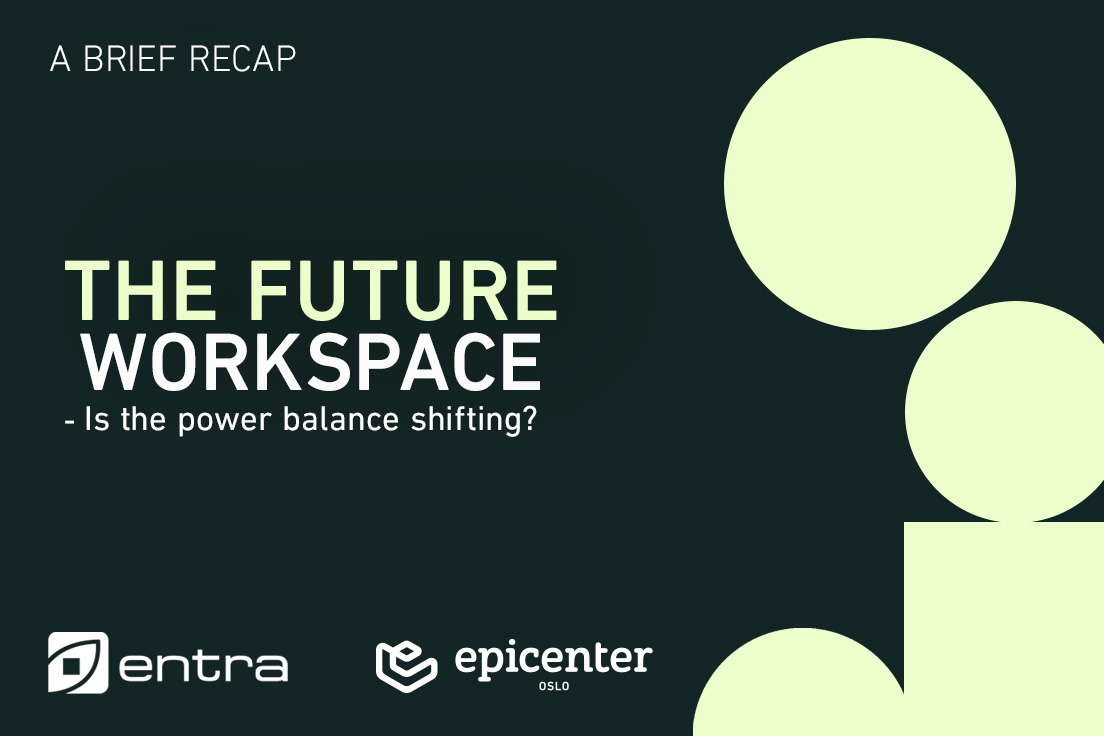Please contact you local service desk for reseting your credentials. //Epicenter team
Craving inspiration and new stories? Don’t worry, we’ve got you covered.

Is the power balance in the Norwegian business sector changing? Together with Entra, we have found some answers through thorough analyses, surveys, and insights from both employees and employers. In the last article we covered all about worklife balance, the use of home offices and the four-day workweek, and in this article we’ll cover topics like culture, work environments and the rising questions about which demographic is the most demanding – is it the elder senior resources or the younger workforce?
We asked the opinions of 1,000 office workers aged 25 to 65 and leaders interested in office design and innovation in their organizations, and here are some of the main findings:
Among those who have changed jobs in the past year, 1 out of 3 say management and culture were important reasons. At the same time, we see that an active culture retains employees longer, as a significant portion of employees who see themselves staying with their current employer for a long time are satisfied with the work culture, environment, and social aspects of their employer.
46% of those who want to stay with their current employer experience that the employer organizes many social activities, compared to 41% of those planning to leave within the next 12 months, who say their current employer rarely or never organizes social activities.
“Social activities and meeting places are crucial for building a common culture and a good work environment. At our company, camaraderie is created through informal conversations during lunch, joint training, social events, or just a drink.”
– Ida Tandberg, Marketing Manager at Propely
7 out of 10 aged 25-29 perceive themselves as attractive employees, while only 4 out of 10 over 50 years say the same. At the same time, it is the youngest employees who make the most demands on their employer – 6 out of 10 younger employees say they make clear demands on their leader.
7 out of 10 under 34 years also respond that they experience a good work environment at their workplace, and they rate above average on how concerned their employer is about their physical and mental health and how the company prioritizes skill development. This positive attitude is not found in the 35 to 45 age group. The survey shows a more negative trend in their assessment of the work environment, facilitation, and employer.
“I would assume that many between 35-45 years feel the time squeeze and are in a phase of life where skill development, culture, and social activities sometimes have to give way to a better balance between work and leisure. It can probably be particularly challenging to deliver well at work while being present for children and family during this period of life.”
– Mathias Willumsen from Epicenter.
Employees, especially the young ones, are setting higher and higher demands on the workplace regarding support for mental health and a good work environment. Invest in skill development and promote good mental health at the workplace. Work together with the employees to create a work culture that promotes openness, support, and collaboration. Ensure to create social arenas and activities to strengthen cohesion and satisfaction among the employees. That way, you keep them longer.
Although a four-day workweek is probably not on the horizon for all of us just yet, it is important to keep up with trends and experiments in the work environment – and listen to your own organization. Involve employees in discussions about potential changes in work policy and be open to feedback. Creating an inclusive decision-making process can help ensure that changes made are acceptable and sustainable in the long term.
Would you like to read the entire report? You can find it here – https://arbeidsplassforfremtiden.no/